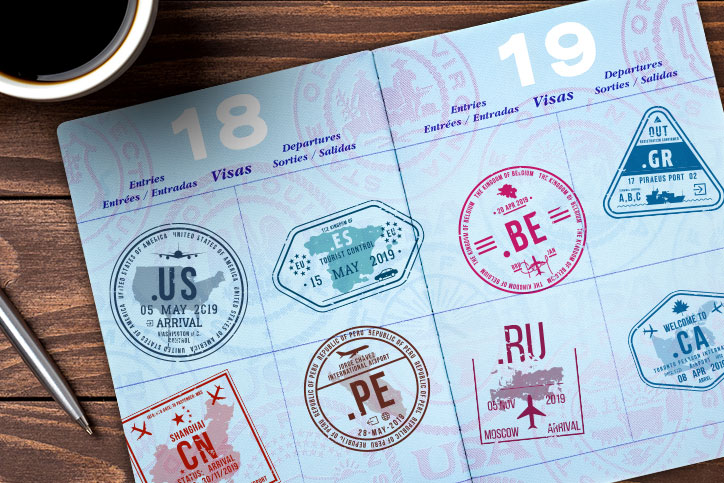International SEO: Building Global Visibility

In today's search landscape, a global approach is paramount. Building an SEO strategy can be complicated, and it’s tempting to take shortcuts and ignore international search and the challenges that come with it. This shortcut can be incredibly costly, however, and can cause your business to lose valuable traffic.
It’s not uncommon for multiple versions of websites to be created to accommodate users of various languages and, unfortunately, it’s not uncommon for this to be done without appropriate planning. It may be easy to rely on a cookie-cutter approach, but it’s not sustainable. And moreover, it can have potentially damaging impacts on your brand.
Let’s walk through some of the most important considerations so you’re well equipped to develop a tailored approach to your international SEO plan.
Subfolders vs. Country Code Top-Level Domains
One of the first things you should consider when building out your international SEO strategy is whether you want to stay with one domain or split them up per country. Both options have their pros and cons, so you’ll want to keep your business goals and objectives in mind when deciding.
With country code top-level domains, or ccTLDs, (.fr domain, for example), you may pull a bigger local audience. Without getting too technical, if a French person is searching for something in France, not only is the ccTLD more likely to rank well, but they may be more likely to click on a link that has their own country code attached. Especially if that content is in their native language as well.
But the thing with using ccTLDs is that it can get complicated, convoluted and messy. Remember, you're not just creating .fr domain. You might be doing a .com, a .co.uk, a .br, and so on and so forth, and all of these will live in their own code base and have their own intricacies and url structures.
On the other hand, you may choose to use one powerhouse domain with its own subfolders (such as a .com/uk/). While you may lose out on some native clicks, keeping all of your content in one place can be a game changer. With one powerhouse domain, all of your content will have a common code base and you'll be able to build up one domain's reputation far more than you'd be able to with individuals.
A ccTLD may be the best way to indicate a local presence to search engines, but subdirectories inherit all of the brand and ranking value of the root domain. When determining your strategy ask yourself, “Do I want more native clicks or am I more interested in a consolidated domain?”
Local Agencies vs. One Global Agency
When setting your strategy from your home country, it may seem like the logical or easy choice to have your regular, local agency set your global strategy as well. After all, they know your brand, they know your goals, they know what's going on. Right? Well, not really. Because if you take this approach in every country you're featured, you might end up with one big jumbled mess of different strategies.
If you're going to tackle international SEO, you need to have one group who will set your global strategy. You've heard the saying about too many cooks in the kitchen, and the same can be said for too many marketers in the strategy session. To create one cohesive, central global strategy, one team needs to take charge. This can be a team who plays a role in ongoing strategy and implementation, but it doesn't have to be. As long as your overall strategy is cohesive, you're in good shape.
From there, ongoing strategies can be set and implemented by in-country or individual agencies. In fact, that's preferable. If you have a presence in China, you're going to want someone with experience focused on Baidu, while someone in the States can set their eyes on Google & Bing.
Long story short, get aligned with your global strategy as a whole and leave the granular stuff to local agencies.
Content Alignment and Translation
So your global agency and marketing team have helped set a strategy, but now what? How do you implement this strategy successfully in local markets?
The most sustainable way to ensure you have aligned messaging is by establishing a process to maintain and update content. Your organization should use a process of approval, governance and maintenance to create, disperse and update content.
To maintain content between countries you need strong governance across all editing parties. If your company already has strong global marketing practices, then this governance shouldn’t be new, but rather a natural extension of existing practices.
Translating content correctly is also vital to succeeding in international SEO. Plugging in English content to Google translate will not cut it, and could greatly harm your business by making you look like an unfit, uninformed contender in the local market place. Make sure that a local team helps you create keyword themes and content that account for regional dialect and differences in grammar.
Off-Page Strategy
The most important thing when curating off-page content internationally is to make sure the sites containing your inbound links are relevant to the region you’re trying to rank in. It may sound obvious, but not all references are created equal. You can have 20 Chinese websites pointing to your French content page, but it's not going to improve your ranking status.
So, how do you make sure you're getting relevant references? By considering each region or country individually. Let's say you're trying to rank in the UK. How do people in the UK use search? What search engines are they using? What UK-based third-party websites are they looking to for information on your industry? How are people talking about your product?
Another important thing to consider is how people use social profiles in the region. What social platforms are people actually using there? How are individuals interacting with these social profiles? Are there dedicated profiles in different countries? What about for different search engines? Be sure to find out what social profiles are relevant where you're trying to rank, and plan your strategy accordingly.
The same applies to PR. If your PR isn't targeting the specific country or region you're trying to rank in, the results are going to be lackluster.
Define Your Approach to International SEO
Keeping these considerations in mind is vital to implementing a successful international SEO strategy. And yeah, content and technical structure are important — especially in international SEO — but what it all comes down to is understanding your audience.
In this day in age, it's possible to reach people from all across the globe. But different people respond and interact with things in different ways, so it's imperative to keep that in mind when trying to interact with them.

Comments
Add A CommentNox App Player is one of the fastest Android emulators out there in the market. You will get amazing speed performance with the help of Nox Emulator.
nice one thanks for sharing
I really want to do Local SEO for my project called Ignition to increase the online visibility. Can anyone help me with that full step by step guide ??. Thank You.
If you know that a good share of your website visitors come from a different country than where you're located, speak different languages, or both, then it may be time to make some changes to your website to create a better experience for all of your international visitors.On the surface, international SEO may seem like a totally foreign concept, but in reality, you may be more familiar with it than you know. Think of international SEO as geotargeting, but instead of optimizing your website to attract traffic from your city or state, you're optimizing it for different countries and languages.
nice